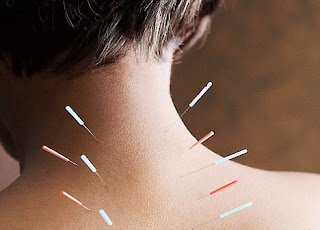What is Acupuncture
In its most traditional form, acupuncture is performed by penetrating the
skin of certain points of the body with thin, small needles. Chinese medicine
indicates that by penetrating certain points of the body, it affects the flow of
qi, or life force, through the body’s channels, referred to as meridians.
The premise of acupuncture is based on a theory that all the body’s functions
are dictated by the qi, and if there are disruptions to the energy’s flow, it
can cause pain. By placing the needles in anatomical points, the flow is opened,
restored or enhanced.
The qi includes five cardinal functions:
Actuation, or the processes of the body that encourage circulation
Warming, or the body’s limbs
Containment, or body fluids
Defense, against pathogenic or spiritual invaders
Transformation, or food, drink and breathing to increase flow into the body’s
channels
The body’s 12 meridians are located throughout the body; eight are considered
“extraordinary,” or essential to the qi’s existence. Meridians also represent
the locations that are considered points for needle insertion during
therapy.
Acupuncture Treatment for Children With Cerebral Palsy?
Part of having cerebral palsy means finding new ways to cope with various
physical symptoms, some of which acupuncture is believed to remedy.
The most comprehensive study of acupuncture and children was funded by the
National Institutes of Health and performed by the University of Arizona
Pediatrics Department. The study involved several children; its goal was to
determine to what extent muscle hypertonicity could be eliminated.
One child in the study had severely tight muscles that were impeding the
development of his internal organs. The 5-year-old had limited vocal ability,
and his affect was more or less flat. He underwent acupuncture at seven channels
on his lower and upper extremities; the treatment lasted a few hours.
Researchers noted a decrease in hypertonicity that was short in duration.
After a second treatment, the child began crying at the insertion of the
needles, and researchers removed the needles.
Auricular treatment without needles was implemented, and it was noted that
his muscles were not as hard as they were before treatment. In this treatment,
the points were stimulated by an ear probe. By the end of 16 treatments with the
ear probe, the child’s limb thrusting was reduced by 50 percent.
Another randomized controlled trial at the University of Arizona Health
Sciences Center indicated that acupuncture may provide relief to children with
spastic cerebral palsy. The evaluation-blind trial assessed children ages 12 to
72 months with spasticity.
After 16 weeks of acupuncture treatment, one group of children displayed
improvement in their gross motor functionality that exceeded researcher’s
expectations. The conclusion of the study is that acupuncture can, if done
properly and early, help children improve their ability to function physically,
but further study is needed.


No comments:
Post a Comment